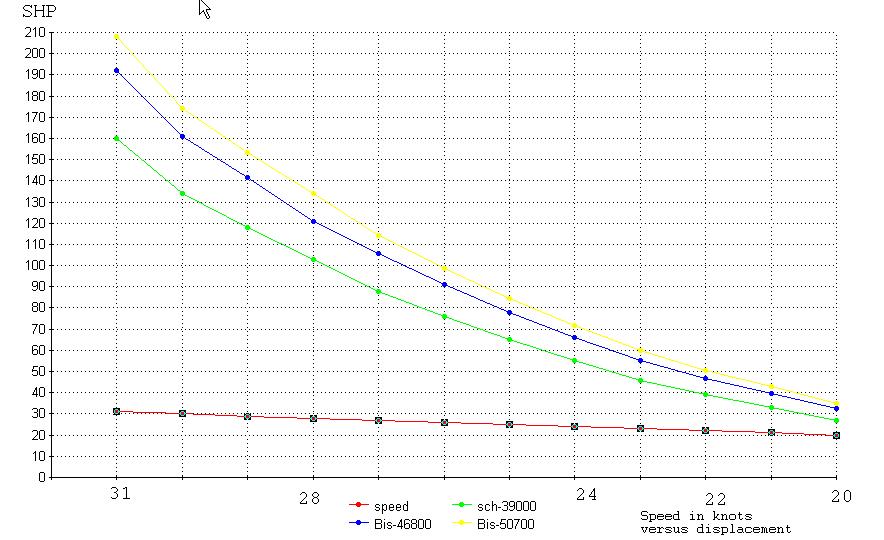Dave Saxton wrote: This doesn't disprove that the Bismarck could do 30 knots though. Actually there are some documented evidence pertaining to the power, shaft RPM's, and the loading. During one documented speed run that has been uncovered to date, the Bismarck was producing about 117,400 HP, and turning the shafts an average of 249.5 rpm. The loading was, IIRC, 75% of payload, and that comes to about 48,900 tons, or within a few % points of normal operational full loads. The speed was 28.374 knots. If the Bismarck could do that speed using only about 117,000 Hp, then surely it could have attained claimed speeds by putting to use the remaining power still on tap.
I do agree that in the right conditions the KGV class could do 29 knots or possibly a bit more, giving a rather small speed differential.
Here's a speed/power curve for Scharnhorst:

from Battleships of Scharnhorst Class, by Koop, page 25.
Note the displacement.
Now, we take Bismarck, add almost 10,000 tons and introduce a much less favourable length to beam ratio and we get a ship that is only about .6 knots slower at the same SHP. Something doesn't add up, and the scarcity of info on Bismarck's speed trials and performance versus SHP make me wonder what was going on.
